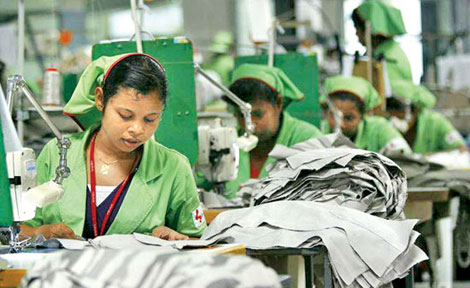Trade deficit contracts in August
Favourable developments in the external sector continued in August,
with a sharp contraction of the trade deficit. Earnings from exports
increased for the third consecutive month in August, reflecting gradual
recovery in the global economy, while expenditure on imports declined, a
media release from the Central Bank said.
 Accordingly, the cumulative trade deficit contracted further during
the first eight months of 2013, improving the current account of the
Balance of Payments (BOP). The current account was further strengthened
by increased receipts from tourism reflecting Sri Lanka as an attractive
tourist destination, with higher inflows on account of workers'
remittances. Accordingly, the cumulative trade deficit contracted further during
the first eight months of 2013, improving the current account of the
Balance of Payments (BOP). The current account was further strengthened
by increased receipts from tourism reflecting Sri Lanka as an attractive
tourist destination, with higher inflows on account of workers'
remittances.
Inflows to the financial account also increased during the year
consolidating the BOP position. Trade Account of the BOP Earnings from
exports recorded a healthy growth of 10.7 percent on a year-on-year
basis in August 2013, while expenditure on imports declined by 7.7
percent reversing the recent upward trend.
Consequently, the trade deficit contracted by 24.2 percent to US $
698 million during the month.
On a cumulative basis, earnings from exports during the first eight
months of 2013 declined marginally by 1.0 percent, while expenditure on
imports declined by 3.3 percent compared to the corresponding period in
2012.
Accordingly, the cumulative trade deficit during the first eight
months of 2013 declined by 5.6 percent to US $ 5, 998 million, from US $
6,356 million in the corresponding period of 2012.
Earnings from exports in August 2013 reached US $ 918 million, the
highest monthly value since January 2012, led by a significant increase
in earnings from agricultural exports. Earnings from agricultural
exports grew on a year-on-year basis, by 41 percent to US $ 247 million
in August 2013 mainly due to an increase in the export of tea and spices
which account for more than three fourths of agricultural exports.
The impressive growth of tea exports by 49.3 percent in August 2013
was a combined outcome of a 43.3 percent increase in export volumes
along with an increase in the average price by 4.2 percent. An increase
in tea exports to Turkey and Iraq contributed mainly to this increase.
Earnings from export of spices also increased significantly by 25.8
percent, led by an increase in the volume of pepper exported with
improved production, despite the decline in prices. Other major
agricultural products exports also improved considerably except for
rubber.
Earnings from rubber exports declined in August mainly due to the
decline in prices, especially of crepe rubber. Industrial exports rose
by 2.6 percent to US $ 668 million in August 2013 mainly due to an
increase in earnings from petroleum products followed by food,
beverages, tobacco and textiles and garments.
Earnings from petroleum products increased by 24.8 percent in August,
led by a significant increase in export of bunker fuel. Earnings from
food, beverages and tobacco and textiles and garment have increased by
54.7 percent and 2.1 percent.
During the month, earnings from the export of garments to the USA
increased by 9.4 percent, while exports to the EU declined marginally by
0.7 percent.
However, the export of rubber products, gems, diamonds and jewellery
and transport equipment declined in August. Expenditure on imports
declined by 7.7 percent to US $ 1,616 million in August 2013, due to the
significant decline in intermediate and investment goods imports.
Expenditure on intermediate goods imports declined by 5.7 percent,
year-on-year, to US $ 1,018 million in August, mainly due to a decline
in the import of fertiliser and crude oil.
Although the import of crude oil declined by 34.6 percent, the
expenditure on fuel increased due to a sharp increase in the import of
refined petroleum products. However, the decline in expenditure on base
metals, agriculture inputs, wheat and maize and diamonds and precious
stones led to an overall decline in imports.
Imports of investment goods declined by 25.7 percent to US $ 331
million in August 2013 mainly due to a sharp decline in import of
machinery and equipment and transport equipment, despite a 10.4 percent
increase in building material imports.
Meanwhile, expenditure on import of consumer goods increased by18.6
percent, year-on-year, in August 2013 with increases in food and
non-food consumer goods categories. Vehicle imports, which were
declining since April 2012 began to increase from June 2013 and recorded
a year-on-year increase of 109.1 percent in August 2013, becoming the
main contributor to the increase in consumer goods imports.
Dairy products, seafood, oils and fats were among the other consumer
goods which contributed to the increase in import expenditure.
Tourist arrivals grew at a healthy rate of 26 percent, year-on-year
to 89,761 in September 2013.
|

